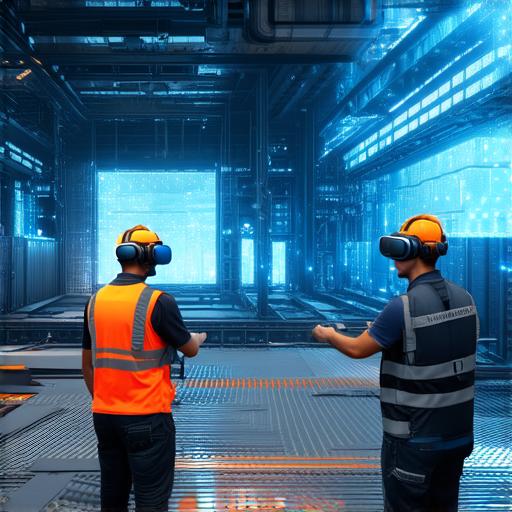
How can the construction industry make use of virtual reality?
The construction industry has always been associated with slow progress and high costs. However, with virtual reality (VR) technology becoming more accessible and affordable, the industry is now able to innovate and streamline their processes in ways never before possible.
Virtual Reality in Construction: A New Era

Virtual reality technology has been around for a while now, but it’s only in the past few years that it has started to gain widespread adoption in the construction industry. With VR, architects, engineers, and builders can create highly detailed 3D models of their projects and then walk through them as if they were actually there.
This allows for better planning, more accurate estimates, and a more immersive experience for all parties involved.
One company that is leading the way in VR technology is Procore. Their software allows construction professionals to collaborate on 3D models of their projects in real-time, regardless of where they are located. This has greatly reduced the need for physical meetings and travel, saving time and money.
Improving Efficiency with Virtual Reality
Virtual reality can also be used to improve efficiency by allowing construction professionals to test different designs and materials before actually building them. This is particularly useful when dealing with complex projects that require a lot of testing and iteration.
For example, the company SketchUp has developed a VR plugin that allows architects to visualize their designs in a virtual environment. By using this tool, they can test different layouts, materials, and lighting conditions without having to build physical prototypes. This not only saves time and money but also reduces the risk of making mistakes during the construction process.
Reducing Costs with Virtual Reality
Virtual reality can also help reduce costs by allowing for more accurate estimates and reducing the need for rework. By using VR technology, builders can get a better understanding of the size and complexity of their projects, which can lead to more accurate bids and fewer surprises during construction.
Additionally, virtual reality can be used to identify potential issues early on in the construction process. For example, if a building is designed to be too tall or too wide, this can be identified and corrected before actual construction begins, saving time and money in the long run.
Enhancing the Customer Experience with Virtual Reality
Virtual reality can also be used to enhance the customer experience by allowing clients to virtually walk through their projects before they are built. This can help them better understand the size and layout of their new space, as well as give them a sense of what the final product will look like.
For example, the company WalkthroughVR has developed a platform that allows real estate agents and home builders to create virtual tours of their properties. By using this tool, clients can get a better sense of the space before making an offer, which can help speed up the buying process and reduce the risk of returns.
Case Studies: How Virtual Reality is Being Used in Construction
There are many examples of how virtual reality is being used in construction to improve efficiency, reduce costs, and enhance the customer experience. Here are a few:
- The Bullitt Center in Seattle, Washington is a green building that was designed using VR technology. By using virtual reality, architects were able to test different designs and materials before building the project, which helped them achieve their sustainability goals while also reducing costs.
- The Guggenheim Museum in Bilbao, Spain was one of the first major projects to use VR technology.


